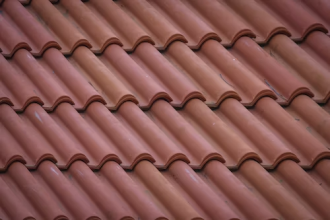As homeowners, we often forget that one of the house’s key elements is the roof. This critical part offers us protection against weather, critters, and other potential hazards. While it’s easy to overlook, considering it’s mostly ‘out of sight, out of mind,’ it is paramount to shoulder the responsibility of maintaining our roofs. Not unlike regular health check-ups, these preventive measures can help us sidestep a slew of hefty expenditures in the future.
A neglected roof can gradually develop weaknesses that eventually cause severe impairment. Preserving a robust roof means constant vigilance, recognising early signs of damage, and swift action when necessary. So, how does a homeowner, with likely scant knowledge about roofs, go about this task? Read on to find practical strategies that are easy to implement, ensuring your roof’s longevity whilst saving you a significant amount of money.
Understanding the Importance of Roof Inspections
Roof inspections are a fundamental element of any roof maintenance program. These are suggested to be conducted at least twice annually. The ideal schedule is to do these inspections during the spring and autumn, after and before severe weather spells in winter and summer, respectively. This timing ensures that damage caused by harsh weather conditions can be spotted and rectified before they grow into substantial, costly issues.
Professional roof inspectors are equipped with the expertise to fathom every little nuance of your roofing structure. Their intensive scrutiny includes checking for shingles that might be damaged or have come loose, searching for telltale signs of water damage, and evaluating the flashing’s structural integrity. Early identification and rectification of potentially harmful issues could circumvent more serious problems and consequent expenses.
Choosing the right roofing inspector is just as critical as the inspection itself. Check for qualifications, experience in the field, and the individual’s credibility. Comprehensive research, examining reviews, and consulting with neighbours or friends can offer some worthy insights. Such professionals can be a reliable partner in maintaining your roof in its best condition and serving you for an extended period of time.
DIY Roof Maintenance Tips for Homeowners
While expert support is ideal, there’s quite a bit you can do on your own. For the go-getter homeowner, some DIY maintenance tips can come a long way. Cleaning gutters is a simple task that can be routinely done to prevent a build-up of leaves and rubble, a common cause for blocking the water flow. Twice a year, make it a point to clear out any gunk to ensure smooth drainage.
Leaks are a regular concern that can spiral into costly repairs if left unattended. Stay alert for water stains on your walls or ceiling – these are strong indications of a leak. Finding the origin of the leak might take some detective work— inspect your roof thoroughly for missing or damaged shingles. While minor leaks might be manageable, remember, safety is paramount. DIY should never compromise your well-being.
A few tools and materials are essential for these maintenance tasks: A reliable ladder, roof rake, hammer, nails, and sealant should be readily available in your home. Remember always to respect safety protocols. Don’t venture onto your roof in wet conditions; dusk or dawn are the best times to guarantee secure footing. If a task seems too daunting or risky, it’s advisable to reach out to a professional.
Choosing the Right Roofing Materials for Longevity
Selecting the appropriate roofing materials is a strategic decision influencing your roof’s longevity. There’s a gamut of options in the market, and it might seem overwhelming. A comparative analysis might come in handy here. Asphalt shingles, preferred by many due to their easy installation and affordable price, have an average lifespan extending up to 30 years. Metal roofing, albeit expensive, prolongs your roof’s life considerably, often for more than 50 years. If one is looking for a more rustic appeal, tile roofs of clay or slate can be chosen, which could last you an entire century, given good maintenance practices.
It might seem tempting to go for the cheapest option available, but conducting a cost-benefit analysis would give a more realistic perspective. An expensive material that offers high durability might significantly reduce replacement costs. Further, energy-efficient and weather-resistant options could significantly bring down energy bills.
One-size does not fit all, and the choice of material should be based on your location. The weather conditions of your area should dictate your decision. For instance, corrosion-resistant materials like stainless steel are advisable for salty coastal air, whereas snow-resistant tiles would more sensible for locations with heavy snowfall.
Seasonal Roof Care to Prevent Damage
Seasons come with specific weather patterns, and being aware of the impact of these changes can help prepare for them better. Winter’s icy conditions may cause the accumulation of snow and ice dams, leading to potential leaks. During spring, detailed inspections can help spot signs of damage caused by winter and take corrective action. Summer’s relentless UV rays can harm shingles, so ensure they’re in optimal condition.
Maintaining a clean roof and clearing out gutters during autumn is essential, as leaves that pile up retain moisture, leading to rot and mildew formations. Preparing your roof for harsh weather conditions involves regular maintenance tasks, inspecting the integrity of the gutter system, verifying the condition of shingles, and checking the flashing’s current state. While not directly associated with roofs, tree trimming is an often-overlooked aspect crucial in preventing branches from falling and damaging roofs during storms.
Hiring Professional Help Without Breaking the Bank
Professional services are unavoidable at certain junctions, like structural damage, extensive leaks, or roof replacements. Finding a reputable contractor who provides you with excellent service and doesn’t break your bank might seem like an impossible task. It’s easier than you think. All it requires is due diligence: gathering multiple quotes, checking references, and extensively researching the qualifications of each contractor.
Many financing options are available to cater to roofing repairs or replacements that might seem like a significant financial burden. Flexible payment plans by contractors and home improvement loans can be opted for to stave off immediate expenditure.
Warranty options should be explored. Many manufacturers offer warranties that cover damage within a stipulated timeline. Insurance claims for common types of roof damage should be pursued. It’s wise to review your policy to understand what is covered, ensuring smoother claims processing.
Wrapping Up
Maintaining a roof need not be a daunting task. With regular inspections, seasonal care, correct choice of materials, and occasional professional help, you can ensure the longevity of your roof. A well-maintained roof not only protects your home but also contributes to cost savings in the long run. So why not mark your calendar and get started on your maintenance schedule today? These steps will indeed protect your home, pocket, and peace of mind.














